November 2, 2018
Air Date: November 2, 2018
FULL SHOW
SEGMENTS

Your Health And Fluoride
View the page for this story
Most public water supplies in the United States add fluoride to reduce tooth decay, and the CDC calls water fluoridation one of the greatest public health achievements in the modern era. But recent studies show a correlation between drinking water containing fluoride and health problems such ADHD and hypothyroidism, which is linked to weight gain and fatigue. Brian Bienkowski, Editor of Environmental Health News, joins Host Steve Curwood to discuss these studies and their health implications. (07:08)
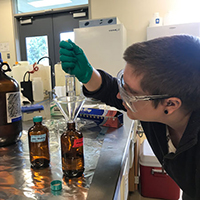
Getting Hormones Out Of Wastewater
View the page for this story
At a wastewater treatment plant, sophisticated filtration and sanitization methods aim to remove pharmaceuticals, microplastics and chemicals. Human waste also contains various hormones, which can stick around in the environment and harm other creatures, and now there are new ways to get hormones out of the water. Ari Daniel reports from a wastewater treatment plant in Salem, Oregon on how this works. (06:13)

Beyond The Headlines
/ Peter DykstraView the page for this story
Peter Dykstra and Host Steve Curwood discuss the UPS company’s new electric bike delivery system before they examine China’s decision to reverse a ban on the trade of rhinoceros horn and tiger bone. Later, they venture back in time to 1995, when a mass migration of waterfowl closed airports in some prairie states of the US. (03:40)

Brazil To Increase Amazon Deforestation
View the page for this story
The Brazilian people have chosen Jair Bolsonaro, a conservative candidate, as their next president. President-Elect Bolsonaro supports more development in the Amazon for mining and agribusiness interests and seeks to reduce indigenous peoples' rights, all at the expense of rainforest protections. Gustavo Faleiros, a former Knight International Journalism Fellow and the founder of InfoAmazonia, spoke with host Steve Curwood about the outlook for the world's largest rainforest. (07:19)

The Red-Tailed Hunter
/ Mark Seth LenderView the page for this story
Almost nothing disrupts the hunt of a red-tailed hawk. Living on Earth’s Explorer-in-Residence Mark Seth Lender glimpses a hawk’s omniscience, and her fearsome impact on her prey, as she circles from above. (02:50)

Exxon Mobil Sued For Fraud
View the page for this story
After three years of investigation, the New York state Attorney General has filed a lawsuit against ExxonMobil for allegedly defrauding its shareholders. The lawsuit alleges that Exxon used different numbers publicly and internally to calculate the impact that climate change regulations could have on its business. Michael Burger of the Sabin Center for Environmental Law at Columbia University explains the nuances of this lawsuit with Host Steve Curwood. (07:59)
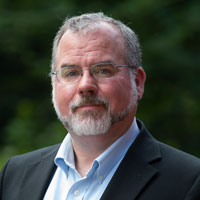
Investigative Reporting In Coal Country
View the page for this story
Investigative reporter Ken Ward has spent decades doggedly unveiling corruption within the coal industry. A West Virginia native, Ward has worked with the Charleston Gazette-Mail since 1991 and was selected for the prestigious 2018 MacArthur Fellowship in recognition of his outstanding reporting. Ken Ward and Host Steve Curwood discuss what he’s learned and still learning from bringing injustices in the coal and natural gas industries to light. (07:01)

Birdnote®: Two Phoebes Share The American West
/ Michael SteinView the page for this story
In the arid American West, water resources tend to determine where animals and plants can thrive. And while many species need lots of water, others are fine even in the driest desert. BirdNote®’s Michael Stein tells a tale of two phoebes that evolved to occupy different habitats within the same expansive country. (02:08)
Show Credits and Funders
Show Transcript
HOST: Steve Curwood
GUESTS: Brian Bienkowski, Michael Burger, Gustavo Faleiros, Ken Ward
REPORTERS: Ari Daniel, Peter Dykstra, Mark Seth Lender
[THEME]
CURWOOD: From Public Radio International – this is Living on Earth.
[THEME]
CURWOOD: I'm Steve Curwood. Adding fluoride to drinking water has the benefit of helping to prevent dental cavities, but new studies say there are some health risks as well.
BIENKOWSKI: One study looked at pregnant mothers' fluoride levels and ADHD symptoms in their offspring a couple years later, and found that children were more inattentive, had more symptoms of inattentiveness, if their mothers had elevated fluoride during pregnancy.
CURWOOD: And it could cause thyroid problems such as weight gain and fatigue. Also, West Virginia investigative reporter and MacArthur fellow Ken Ward on the rewards of his work in coal country.
WARD: I walked into the courtroom and there were a couple of ladies there, family members of miners who died at UBB, and one of them kind of glanced over her shoulder and saw that I’d come into the room. And said ‘Oh, well there’s Ken. We knew Ken would be here, the Gazette's always been here for us.'
CURWOOD: That and more this week on Living on Earth – Stick Around!
[NEWSBREAK MUSIC: Boards Of Canada “Zoetrope” from “In A Beautiful Place Out In The Country” (Warp Records 2000)]
[THEME]
Your Health And Fluoride

Fluoridated water is used for drinking, preparing food and cleaning. (Photo: Espensorvik, Flickr, CC BY 2.0)
CURWOOD: From PRI and the Jennifer and Ted Stanley Studios at the University of Massachusetts Boston this is Living on Earth. I’m Steve Curwood.
In the U.S., most of the public drinking water supply has fluoride, which is intended to prevent dental caries or cavities. The Centers for Disease Control and Prevention has called water fluoridation “one of 10 great public health achievements” in the 20th century, and the original research in the 1940’s was based on sodium fluoride. These days, though, the bulk of fluoride added to drinking water is in the form of silicofluorides, which are non-pharmaceutical byproducts of industrial processes that can corrode old pipes. And now a growing body of research associates fluoride added to drinking water with health risks, including ADHD and such thyroid problems as weight gain and fatigue.
Here to discuss the recent research and the health risks and benefits of fluoridated water is Brian Bienkowski, editor for Environmental Health News and The Daily Climate.
Brian, welcome back to Living on Earth!
BIENKOWSKI: Thanks for having me, Steve.
CURWOOD: Why should we be concerned about these studies? We hear that fluoride’s a good thing. Why should we be worried?
BIENKOWSKI: Right. And it's an interesting debate because there is two points of public health pitted against one another. You have healthier teeth because of this, but also some of these links that are concerning. And I think the concern for many health researchers is that we are putting this in our water and we're not sure exactly what each person's exposure is. So your exposure living in a community water supply that receives fluoride may be different from mine. I live in the country, and I'm on a well, so there is no fluoride added to my water. So, we really have this widely varying exposure levels to fluoride for different people.
CURWOOD: So, usually, when it comes to talking about chemical exposure, we're looking to limit accidental contact. Of course, in this case, we're purposefully dosing ourselves with fluoride. Talk to me about some of the history behind having us add fluoride to our water supplies.
BIENKOWSKI: So, for decades now, we've been adding fluoride to some community water supplies in order to prevent tooth decay and cavities in teeth. It's been successful, and most public health associations don't dispute that. But there is growing concern that we're adding fluoride and without knowing exactly how much certain people are being exposed - because you may drink more water than I do, for example - but it has been considered a pretty big public health success to this point.
CURWOOD: So, what portion of the population of the United States would you say is exposed to fluoridated water at significant levels?
BIENKOWSKI: So, the most recent data from the Centers for Disease Control and Prevention has about 66 percent of the US population. That's about 75 percent of community water supplies are having fluoride added to it. And fluoride is naturally occurring in some water, but they put it at a level that they found protective of teeth.
CURWOOD: So, what are some of the health impacts that these studies are showing that are correlated with the ingestion of fluoride in water?
BIENKOWSKI: So, just this month, there were three studies published on the same day that found two different health impacts. So, one study looked at iodine deficiency in Canadian adults that had elevated fluoride levels, and found that if you had a lot of fluoride in your system, and iodine deficiency, you were more likely to have more thyroid stimulating hormones, which is suggestive of hypothyroidism, a suppressed thyroid gland. And then one study looked at pregnant mothers’ fluoride levels and ADHD symptoms in their offspring a couple years later, and found that children were more inattentive, had more symptoms of inattentiveness if their mothers had elevated fluoride during pregnancy. And then a separate study was just showing that if you live in an area that has fluoridated water, the pregnant women had two times the levels of fluoride in their urine compared to women who lived in areas that did not have fluoridated water.

Fluoride is often added to dental products such as toothpaste and mouthwash. The exposure associated with the consumption of fluoride in drinking water is much greater than the exposure associated with contact in dental products, which are not ingested. (Photo: Marco Verch, Flickr, CC BY 2.0)
CURWOOD: And what about the scientists who conducted these studies? What do they say is significant about their results?
BIENKOWSKI: Well, specifically in the Canadian study, I mean, this was a massive study, looking at 7 million adults in Canada. 18 percent of those adults had iodine deficiency, so, we're talking a million and a half people at risk from higher fluoride in the water and iodine deficiency. So, that's a significant amount of people. And of course, the other study looking at children. Anytime you talk about children, potential developmental health impacts, children are just more susceptible to chemicals and chemical exposure when they're in the womb, and they're still developing as young, as young infants. So, that's definitely a concern.
CURWOOD: So, somebody listening to us might be using fluoride in the toothpaste at home, or mouthwash. How concerned should they be about that exposure to fluoride?
BIENKOWSKI: So, the good news is, Steve, most of the fluoride we're exposed to in mouthwash and toothpaste, we spit out, we don't ingest. Children, that's a little bit different. Studies have shown that children are a little more susceptible to maybe swallowing some of that toothpaste. So, maybe their exposure is a little higher. But really, the researchers I talked to are more concerned about the water because that's something we are purposely drinking, cooking with, and ingesting at much higher levels in anything you'd use in personal care products.
CURWOOD: How do you think these studies might impact the regulation of water fluoridation here in the United States?
BIENKOWSKI: Well, the American Dental Association has really drawn a line in the sand and said that fluoridation is a good thing. And you can't blame them, because they come from the standpoint of looking at people's teeth and oral care, and it's been a public health win for that. Whether or not the studies in particular will gain any traction or move the needle on this issue remains to be seen. But, I think there is a kind of a growing concern in the public health community. In all the researchers I spoke to, this was just another study in a line that they're trying to do to try to tease out any of these health impacts. So, you're going to see more of these studies coming out.
CURWOOD: Now, since water fluoridation does have a positive record in terms of helping to protect children's teeth from cavities, how do you balance the pros and cons of this issue?
BIENKOWSKI: I think the way to do that is to try to find these levels, which could be protective of teeth, but could also be put at a level that's not impacting people. I spoke to a dental health expert who took these studies very seriously and said, maybe the answer is certain communities that are disadvantaged and maybe don't have the opportunity to practice good oral care at home or don't have health insurance, maybe fluoridation is good for those communities. Whereas, other communities that have those benefits, maybe water fluoridation isn't a good idea there. So, I think it's just kind of taking a more nuanced view of how we put fluoride in the water and to what communities are served.
CURWOOD: Now, for a number of years, people who were opposed to having fluoride in the local drinking water supply were labeled as extremists. And there are political organizations to the right, for example, John Birch Society that were anti-fluoride. What about the politics of fluoride in drinking water?

Mothers who had ingested higher amounts of fluoride during their pregnancies were more likely to have children with ADHD symptoms, a study in Mexico has found. (Photo: Fieldwork Inc., Flickr, Public Domain)
BIENKOWSKI: Well, I would say that some people were a little conspiracy driven in the early days saying that fluoride was a Communist plot. I think most of those theories have been debunked. I think what's most important to take from these new studies is that it's more nuanced than being pro- or anti-fluoride. This is a compound that is shown to affect the thyroid and there's no disagreement with that in the medical community. The disagreement is whether it's being put in our water at levels that's indeed doing that. So, I think that the best way to go forward here is to follow the science and have policymakers follow through on actually using the best available science.
CURWOOD: Brian Bienkowski is editor of Environmental Health News, that's EHN.org, and DailyClimate.org. Brian, thanks so much for taking the time with us today.
BIENKOWSKI: Thank you, Steve.
Related links:
- Environmental Health News: “We Add It to Drinking Water for Our Teeth — but Is Fluoride Hurting Us?”
- The Canadian study on fluoride’s effects on thyroid function
- Click here to access the Canadian study examining the urinary fluoride concentrations of pregnant women
- FluorideAlert.org: “Dartmouth Researcher Warns of Chemicals Added to Drinking Water”
- The Mexican study on prenatal fluoride exposure and ADHD
- Living on Earth’s most recent segment on water fluoridation
[MUSIC: Dan Sullivan, “A La Carte” on Cape Cod Magic, self-published]
Getting Hormones Out Of Wastewater
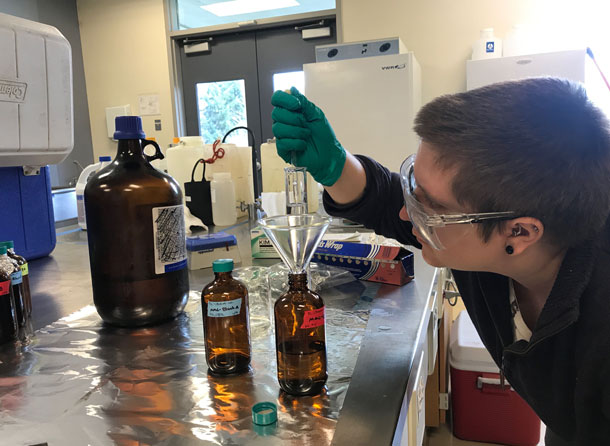
Postdoctoral Researcher Carolyn Hutchinson tests a water sample in the lab. (Photo: Ari Daniel)
CURWOOD: On the other end of the municipal water system is sewage. Our modern world simply wouldn’t be the same without wastewater treatment, which keeps much of the yuck we produce out of streams, rivers, lakes and oceans. And it’s a tall order, because people put a lot of stuff down into sewers, including pharmaceuticals, microplastics, and chemicals that standard treatments fail to filter out. And human waste contains various hormones, though there are ways keep them out of the environment.
Ari Daniel visited a plant in Salem, Oregon to find out how.
DANIEL: It’s hot out. So you take a shower. Or you fire up the grill. And after eating a burger, you wash your plate off. And then, later, you flush the toilet. All that water — it just… goes away. Gurgles down a drain into the pipes. But that’s hardly the end of the story. That water gets cleaned up so it can tumble back into a river or stream. And it turns out that the process may inadvertently help clear the water of potent hormones.
The big stuff, that’s easy to filter out of the 45 million gallons of water flowing through the Willow Lake Wastewater Treatment plant in Salem, Oregon every day.
EISNER: There’s a lot of little McDonald’s toys that come through, little kids flush down the toilet.
DANIEL: Stephanie Eisner — operations manager here — says they also get a lot of lumber and tires showing up.
DANIEL: That’s getting flushed down the toilet?
EISNER: Well, most likely, somebody pulled a sewer manhole in the road and stuck tires in there.
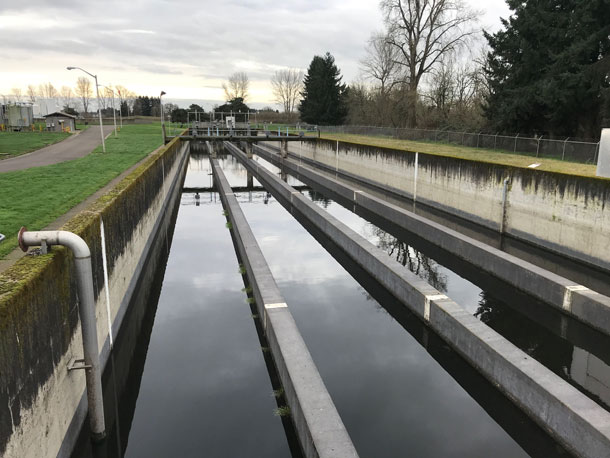
A series of long, narrow rectangular pools where treated wastewater is disinfected and exposed to sunlight, which can degrade chlorinated estrogens. (Photo: Ari Daniel)
DANIEL: After the toys and tires get screened out, what remains is dirty water.
EISNER: Right now, we’re right by our south digester complex.
DANIEL: We are walking amongst sewage?
EISNER: So there’s pipes below us, yes, that would be having wastewater flowing through it. We try to remove as much of the pollutants that we can.
DANIEL: That removal takes place, in part, in clarifiers — that look like giant circular swimming pools. Solids settle out and can be removed, and greases float to the surface where they can be skimmed off. Separately, bacteria eat away a lot of the gunk in the water. And then, the final step, says Dave Griffith, an environmental chemist at nearby Willamette University —
GRIFFITH: This is the disinfection basin in front of us, and it’s a really important part of wastewater treatment. You kill anything that’s pathogenic.
DANIEL: The plant disinfects the water by chlorinating it. Griffith’s got his eye on this chlorination step… because chlorine is reactive, so dumping it into the water here means creating a raft of new chlorinated compounds.
[WATER SOUNDS]
We stand above a surging spray of water that’s about to leave the plant and enter the Willamette River.
GRIFFITH: Alright, shall we grab a sample?
HUTCHINSON: We should.
DANIEL: Griffith and one of his researchers, Carolyn Hutchinson, lower a pail into the froth below. They’re collecting water samples in search of estrogen.
HUTCHINSON: Estrogen is a very potent steroid hormone.
DANIEL: Everyone — you, me, your neighbor — excretes estrogens, so they find their way into our wastewater.
HUTCHINSON: One big effect is it feminizes fish populations.
DANIEL: That’s right — it feminizes fish. Which means turning all fish in a population — including the males — into females. And that can lead to a collapse of the fish stock.
HUTCHINSON: It also affects amphibians, birds, even mammals.
DANIEL: Estrogens react with chlorine, and Griffith wants to know what happens to the estrogens here after the chlorination step.
GRIFFITH: That basin over there where the chlorination happening is exposed to the sunlight.
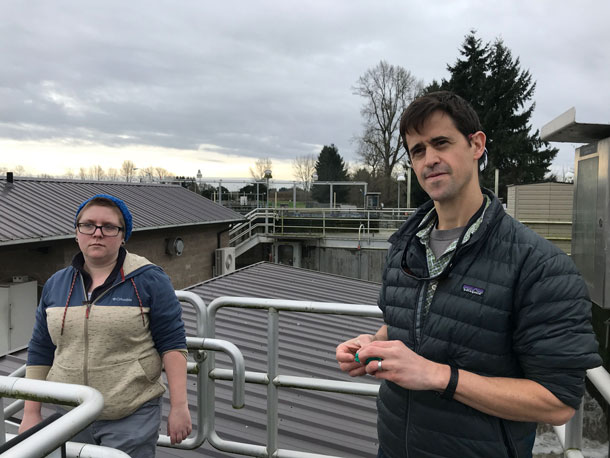
From left, Carolyn Hutchinson and Dave Griffith at the Willow Lake Wastewater Treatment Plant in Salem, OR. (Photo: Ari Daniel)
DANIEL: I follow Griffith’s gaze to a long, narrow rectangular pool. It’s uncovered, which isn’t the rule. Due to odor and other reasons, not all treatment facilities expose the water to sunshine. But the UV radiation from sunlight introduces an unexpected — and free — benefit.
GRIFFITH: One intriguing thing that we found is that the chlorinated estrogens degrade much more quickly under sunlight than the regular estrogens. Before they even get to the end of the basin.
DANIEL: In other words, they’ve degraded before the water exits the plant and returns to the river.
EISNER: That’s good news.
DANIEL: Stephanie Eisner again.
EISNER: So it might make some people change the way they do things.
GRIFFITH: Our goal is that we can inform how we treat wastewater in a more cost effective, overall a better way.
[BOAT MOTOR RUNNING]
DANIEL: A couple miles away, a small boat speeds along the Willamette River. Dave Griffith is aboard.
GRIFFITH: So, there it is right over there.
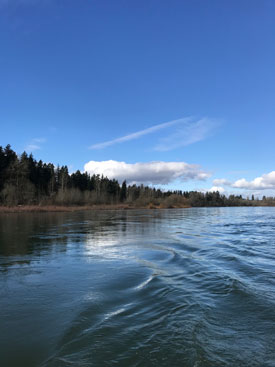
Treated wastewater flows into the Willamette River and gets diluted. (Photo: Ari Daniel)
DANIEL: He points to a spot in the water near the tree-lined shore. It’s where the water from the treatment facility flows into the river and gets diluted.
GRIFFITH: So we’re gonna go just downstream of this point to get a sample of basically river water and wastewater mixed together.
DANIEL: This is where Griffith can measure how many estrogens there are in the real world. Which will tell him just how effective the degradation of these hormones has been.
GRIFFITH: If we understand better the mechanisms here and in the wastewater treatment plant, we can better predict what’s happening in any other river situation where you have a wastewater treatment plant discharging water.
DANIEL: Estrogens are just the beginning. Because Griffith’s curious about the interplay between chemicals and our liquid environment more broadly.
GRIFFITH: There’s not a chemical out there that you make, produce, use that doesn’t end up in the environment in some way or another, whether it’s accidental or intentional.
DANIEL: Griffith pauses, the boat hovers over its waypoint, and the water sampling begins in earnest.
[WATER SOUNDS]
Nearly all the water flowing past the boat today won’t end up in one of Griffith’s glass containers. It’ll snake northwards, connecting with the Columbia River, where it’ll surge west, ultimately flooding out into the Pacific. Until eventually, one day, it may once again find itself inside your home.
CURWOOD: That’s Ari Daniel reporting from Salem, Oregon.
Related links:
- The Willow Lake Wastewater Treatment Plant in Salem, OR
- About environmental chemist Dave Griffith
- About Reporter Ari Daniel
[MUSIC: Dan Sullivan, “Wave” on Cape Cod Magic by Antonio Carlos Jobim, self-published]
CURWOOD: Coming up – Brazil has elected a President who campaigned on scaling back environmental protections. That’s just ahead on Living on Earth – stay tuned!
ANNOUNCER: Support for Living on Earth comes from the Gordon and Betty Moore Foundation and from a friend of Sailors for the Sea, working with boaters to restore ocean health.
[CUTAWAY MUSIC: Dan Sullivan, “Wave” on Cape Cod Magic by Antonio Carlos Jobim, self-published]
Beyond The Headlines
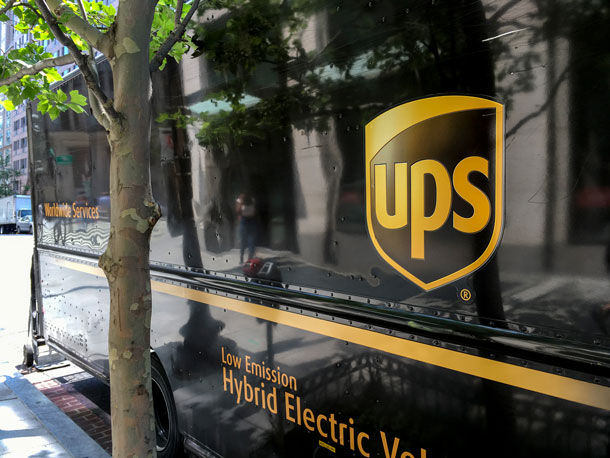
UPS, originally founded as a bicycle delivery service in Seattle in 1907, is returning to its roots by introducing an electric bike delivery system. The pilot program is scheduled to take place in Seattle in November 2018. (Photo: Ryan McKnight, Flickr, CC BY 2.0)
CURWOOD: It’s Living on Earth. I’m Steve Curwood. Time now for a look beyond the headlines with our intrepid scout Peter Dykstra. Peter is an editor with Environmental Health News, that’s EHN.org and DailyClimate.org. He’s on the line from Atlanta – hey Peter, what do you have for us today?
DYKSTRA: Hi, Steve. You know, there’s no more competitive business out there than the package delivery racket. You’ve got the Postal Service, and FedEx, and UPS all trying to outdo each other, all trying to out-deliver each other, and in at least one case, they’re trying to out-green each other.
CURWOOD: Really? I mean, I think all these boxes that I’m getting, I don’t know how green they are. How are they trying to out-green each other?
DYKSTRA: Well, UPS is trying out a new method of delivery – heavy-duty electric bikes that can carry trailers with up to 400 pounds of your stuff. They say this will reduce pollution and help them navigate more efficiently in urban areas.
CURWOOD: 400 pounds, that’s a lot of pedaling!
DYKSTRA: That’s a lot of pedaling, except these are e-bikes, so there won’t be any pedaling involved. And the irony of all this, is that the city of Seattle, where this will be tested out, is where UPS started out in 1907, I’m sure we both remember it well. And UPS started as a bike-service, and now they’re a 21st Century bike service.
CURWOOD: Hey Peter, I don’t want to pop your bubble, but, you know, I don’t remember 1907. What else do you have for us today?
DYKSTRA: More environmental news from China. As we hear over time, some of the news from China is promising, in terms of their addressing the huge environmental problems from a growing nation of over a billion people, some of it’s bad. This particular environmental news is, to me, particularly outrageous. China is reversing a 25-year ban on the use of tiger and rhino products in traditional medicines.

China has decided to reverse its 25-year ban on the trade of rhinoceros horn and tiger bone. Most often used in Chinese traditional medicine, China says these products will come from farmed rhinos and tigers. (Photo: International Fund for Animal Welfare, Flickr, CC BY-NC 2.0)
CURWOOD: Wait a second, but those are endangered animals. What’s going on?
DYKSTRA: Well, yeah, and there’s no mention in the official announcement of the status of tigers and rhinos. China says they can handle it. They say that this will be tightly regulated. They also say that they’re only going to take tiger and rhino parts from farmed animals.
CURWOOD: What sort of medical value do these things have anyway, for people?
DYKSTRA: The Western world, everybody outside the Chinese traditional medicine world, says they’re useless, they’re ornamental, they’re status symbols in a country with a rapidly growing middle and upper class. And no less than the World Federation of Chinese Medicine Societies agrees and says that tiger bone has no relevance to medicine and healing whatsoever.
CURWOOD: Let’s take a look back into the history vault now; what do you have for us today?
DYKSTRA: 1995, in Early November, the start of fall was a grand passage. Do you know what a grand passage is?
CURWOOD: Some kind of a dance?
DYKSTRA: A grand passage is when all of the waterfowl, ducks and geese by the millions take off on their southern migration all at the same time. There was one in 1940, there was one in 1955. The most recent was 1995, when a cold snap in Canada forced all of these ducks and geese up in the air, headed south in such numbers that they actually closed the airports in Kansas City and Omaha.
CURWOOD: So, I imagine this is what would happen back in the day of the passenger pigeon.

November of 1995 boasted the third recorded instance of something known as a “grand passage” – a massive, simultaneous migration of millions of waterfowl. (Photo: United States Fish and Wildlife Service, Flickr, CC BY 2.0)
DYKSTRA: Happened with the passenger pigeon, except the passenger pigeon went extinct in 1912, so air traffic was a little bit less of a concern.
CURWOOD: I guess not, Peter. Hey, thanks so much for taking the time with us today. Peter Dykstra is with Environmental Health News, that’s EHN.org, and DailyClimate.org. And we’ll be talking about the elections real soon.
DYKSTRA: Looking forward to it. Thanks, Steve.
CURWOOD: And there’s more on these stories at our website, LOE.org.
Related links:
- Reuters | “UPS Gears Up for Heavy-Duty eBike Delivery Test in Seattle”
- CNN | “China Allows Use of Tiger and Rhino Products, Infuriating Wildlife Activists”
- Chicago Tribune | “Cold Front Drives Ducks to LA. LA. Land”
[MUSIC: Berlin Philharmonic/Herbert von Karajan, “Morning Mood,” Peer Gynt Suite No.1, by Edvard Grieg, Deutsche Grammophon https://www.youtube.com/watch?v=MaBaPXt-wBA]
Brazil To Increase Amazon Deforestation

Jair Bolsonaro of the Social Liberal Party (PSL) won Brazil’s presidential election on Sunday October 28, 2018. (Photo: Fabio Rodrigues Pozzebom/Agência Brasil, Wikimedia commons, CC 2.0)
CURWOOD: The Brazilian people have chosen Jair Bolsonaro from the right as their next president. He defeated Fernando Haddad of the left leaning Worker’s Party, long embroiled in corruption scandals. And President-elect Bolsonaro himself is controversial. During the campaign he made it clear he puts agribusiness, hydro power and mining in the Amazon forest ahead of conservation and many of the rights of indigenous peoples. The Amazon is the world’s largest rainforest, and Brazil’s carbon emissions rank 5th in the world, mostly due to deforestation. During the campaign he suggested he would withdraw Brazil from the 2015 Paris Agreement, although recently he dialed that back. Joining us now is Gustavo Faleiros. He's a former Knight International Journalism Fellow and the founder of InfoAmazonia, a digital news platform that monitors the Amazon with satellite data. He joins us from São Paulo. Welcome to Living on Earth, Gustavo!
FALEIROS: Hello.
CURWOOD: So, what's the view there of how closely he is to mining and agribusiness interest there?
FALEIROS: Well, two things that he said in the very beginning of the campaign, the future of Brazil, with the mining of some rare minerals in the Amazon region. So, he said that we need new partnerships to explore the Amazon region. And as for the agribusiness sector, they openly declared their vote on Bolsonaro. And one of his main proposals is actually to them, an organization which is called the landless movement. And this landless movement has been active for the best 30 years, invading some unproductive farms. So, he's saying that this is not, will be not allowed anymore and actually calling them terrorists. So, there is a clear alignment with the agribusiness sector for defending of the property and to facilitate some of their pledges in terms of getting quicker approval of best sides and quicker approval of the first station permits.
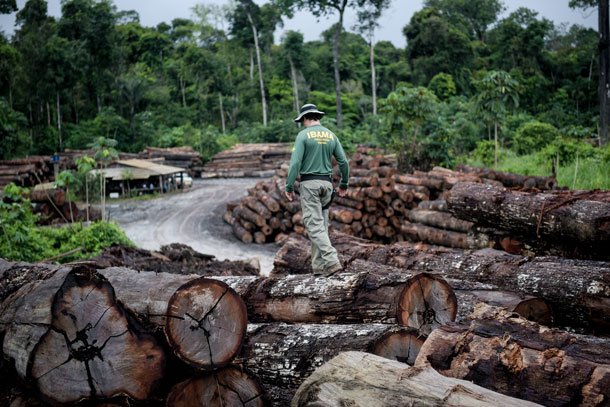
Many worry that illegal mining and logging will increase in Brazil’s Amazon region with the election of Jair Bolsonaro. He has said that he wants to combine Ibama, the ministry responsible for enforcing environmental regulations, with the business-focused agriculture ministry. Above, an Ibama worker walks atop seized illegal timber from the indigenous territory of Pirititi in the state of Roraima. (Photo: Ibama, Flickr, CC BY-SA 2.0)
CURWOOD: So, he favors large agribusiness over small farmers. Let me ask you about deforestation. Now, for years, deforestation has gone down in Brazil, in fact, up until, I think, 2012 or so, under [former President] Lula. It had decreased. But in recent years, the deforestation has been increasing. What will President-elect Bolsonaro do about deforestation? Which way do you think he'll push the trend?
FALEIROS: I think it will continue to go up. That’s based on some analysis that I read. It started in 2012, after the change on the forest code. A law that was very important in Brazil was made giving the sign to producers that it was okay to cut down trees because at some point, the government would pardon them. So, what I see happening right now is a very similar thing because Bolsonaro has made, as one of his first appoints, that he wants to stop chasing producers, that's more or less how he said it. He said, well, this IBAMA, as the environmental agency is called here, is hindering production. So, we're going to take them out. They won't chase producers anymore. So, what I see, is if he is weakening this environmental agency, we won't have enforcement. We won't have no one to curb deforestation or illegality, and so I see deforestation going up.
CURWOOD: Talk to me about agribusiness in Brazil. Just what are the main industries there? And how would you rate their political influence as of today?
FALEIROS: Well, the main industries here are meat and soybeans. So, we actually compete a lot with the US for the Chinese market and other markets to sell these agro-commodities. And there is a huge range of producers, you have very advanced technological, whole production of soybeans and large scale and big properties.

Brazil is the deadliest country in the world for environment defenders due to land conflicts, according to Global Witness. Above, members of the Munduruku people stage a protest against the Tapajós Hydroelectric complex which if completed, is expected to contribute great losses in indigenous and preserved land. (Photo: Greenpeace Brazil, Wikimedia commons, CC 2.0)
And you also have more, especially in the meat industry, people not taking so much care of the environment. But what is true is that over the years, their political influence has been growing and growing in progress, to the point that we have now a base that we call the ruralistas, which is a group of congressman that lobbies for the sector. And then, they've been growing their influence, I would say, over the past decade, especially since 2012, and that, when they actually managed to change the forest code, what we say is like, they tasted the victory, and they realized that they could do much more, and they started putting much more controversial proposals such as mining indigenous land.
CURWOOD: So, what does he said about indigenous populations there?
FALEIROS: Well, he said in a recent speech that if he was elected, not even a centimeter would be given to indigenous people anymore. As you probably know, Brazil is now the number one country in terms of land violence, land conflicts. We have here, according to reports of Global Witness, the highest number of land defenders, environmental defenders killed each year. And also we did ourselves, at InfoAmazonia, a report showing 35 years of the killing of indigenous people. And the numbers were staggering. More than 1,000 indigenous people were killed in the past 35 years. So, it is an issue that is here, and it's getting worse. Because of these frontiers of deforestation, the actual land conflict is really present. So, we might see more violence in the rural areas of Brazil because of land conflicts or invasions to indigenous land.
CURWOOD: So, Gustavo, there are more than 200 million people in Brazil. President-elect Bolsonaro is just one person. Being that one person, what does his presidency mean about the future of the Amazon rainforest?
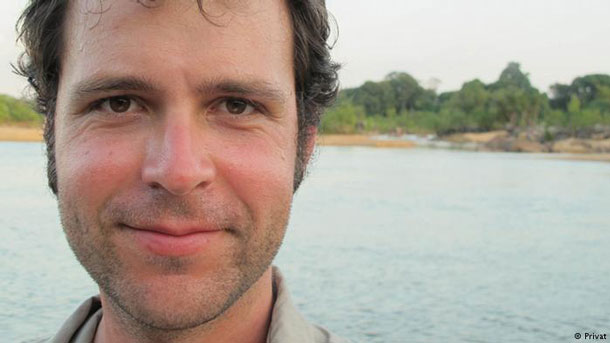
Gustavo Faleiros is a Brazilian journalist, a former Knight International Journalism Fellow, and the founder of InfoAmazonia, a digital news platform that uses satellite data to monitor information about the Amazon rainforest. (Photo: Courtesy of Gustavo Faleiros)
FALEIROS: I think it represents the view of a great part of the society that the Amazons should develop and have infrastructure and give better conditions for its inhabitants. But I don't think it represents the wish of a great number of Brazilians that this improvement of the region should happen with what we call sustainable development, with the care of the natural resources and assets and biodiversity and water that we have there. There is a need for development, of course, but it needs to be done in an inclusive way, taking into account the people who lived there for centuries, which are the indigenous people, and even taking into account the future of people who are not Brazilians, who depend on this tropical forest for having a stable climate.
CURWOOD: Gustavo Faleiros is a Brazilian journalist and a former Knight international journalism fellow. Thanks for taking the time with us today.
FALEIROS: Thank you.
Related links:
- The Guardian | “Amazon at risk from Bolsonaro’s grim attack on the environment”
- New York Times | “What Jair Bolsonaro’s victory could mean for the Amazon, and the planet”
- More on InfoAmazonia
- Global Witness: “International NGOs issue stark warning to Bolsonaro on climate change and human rights”
[MUSIC: Entrain, “Cohiba” on Rise Up, by S. Holmstock, Dolphin Safe Records]
The Red-Tailed Hunter

A red-tailed hawk. (Photo: Mark Seth Lender)
CURWOOD: Winter has already made its way into parts of North America, but as Living on Earth’s explorer in residence Mark Seth Lender tells us, a bit of snow is not going to stop a red-tailed hawk.
LENDER: Red-tail faces the sunrise. Hawks in winter always do. Her bright and speckled breast is a beacon against the grey of early morning. The land beyond is empty. The hills in silence hug themselves. In the wavering light even the pallid sun is shivering. But Red-tail is not. Perched high in the blank scrawl of limbs she warms her vulnerable core in the parsimonious light. Minutes pass. An hour. The sun expanding in the sky. She turns her back soaking the dark flight feathers. And still she waits. And flies, only when she has a mind to…

A perturbed crow. (Photo: Mark Seth Lender)
Over the days, she will patrol the land until its secrets are her own. Where the doves feed. Where the rabbit hides. When the fox heads for home. Then the field is hers. Birds, she takes mostly from cover, hiding then striking out dispassionate as a sniper. Squirrels, more agile, are harder but no match for the crushing power of her talons. She will drop on them from the blind side. They know it, and hate her for it. They can do nothing except chatter.
I once watched a red-tail on a kill she made on the ground, the feathers dusting off the carcass like early snow and the squirrels edged in close to harass her, running in and out. Three-quarters of an hour of this and she’d had enough, and took the bloody remains away with her. If the squirrels thought they’d won some small victory they were fooling no one but themselves…
Red-tail circles a seething wheeling flock of grackles, like a shark. The little birds ball and spread and turn, and turn, and are no match for her. Later, she lands at the top of a low cedar. A mockingbird drops and strikes her, her shoulder, her broad back. She does not even look at him. When the crows find her it will be different. They will not dare to touch her but they are loud.

Red-tail takes flight. (Photo: Mark Seth Lender)
She will tire of them as she tired of the squirrels, and she will leave.
But then the sun will be down and she will be able to see, perfectly. And the crows will not.
CURWOOD: Mark Seth Lender is Living on Earth’s explorer in residence, and he has more at our website, LOE.org.
Related link:
Mark Seth Lender’s Website
[MUSIC: Inkas Wasi, “The Flight Of the Condor” on Waqra Fiesta, by Daniel A. Robles, self-published]
CURWOOD: You can hear our program anytime on our website, or get an audio download. The address is LOE.org. That's LOE.org. There you’ll also find pictures and more information about our stories. And we’d like to hear from you: You can reach us at comments@LOE.org. Once again, comments@LOE.org. Our postal address is PO Box 990007, Boston, Massachusetts, 02199. And you can call our listener line, any time, at 617-287-4121. That's 617-287-4121.
CURWOOD: Coming up, New York state takes ExxonMobil to court over climate risk reporting. That’s just ahead here on Living on Earth – stay tuned!
ANNOUNCER: Funding for Living on Earth comes from you our listeners and United Technologies, combining passion for science with engineering to create solutions designed for sustainability in aerospace, building industries, and food refrigeration. UTC companies such as Otis, Carrier, Pratt and Whitney, and UTC Aerospace systems are helping to move the world forward. You can learn more about United Technologies by tuning into the Race to Nine Billion podcast; listen at racetoninebillion.com. That’s racetoninebillion.com. This is PRI, Public Radio International.
[CUTAWAY MUSIC: Entrain, “Cohiba” on Rise Up, by S. Holmstock, Dolphin Safe Records]
Exxon Mobil Sued For Fraud

Prosecutors say ExxonMobil kept two sets of books on the effects of climate change. (Photo: Mike Mozart, Flickr CC By 2.0)
CURWOOD: It’s Living on Earth. I’m Steve Curwood.
Investigative reporters from Columbia’s Journalism school, Inside Climate News, and the Los Angeles Times documented in 2015 that ExxonMobil knew decades ago about how fossil fuel burning would disrupt the climate, but told the public otherwise. The New York Attorney General also investigated and now that State has sued the oil giant. It alleges that ExxonMobil defrauded its shareholders by providing them with one set of numbers about the likely financial impact of climate regulations while the company used different numbers internally that minimized regulatory risk. Michael Burger is the executive director of the Sabin Center for Climate Change Law at Columbia and joins me now from New York. Welcome to the show, Mike!
BURGER: Thank you, Steve.
CURWOOD: What exactly has the New York Attorney General filed in this case?
BURGER: So, the New York State Attorney General filed a summons in New York State Supreme Court that alleges that Exxon intentionally misled investors about the risk that climate change regulation poses to its core businesses. And at the heart of the case is the claim that Exxon told investors that it was using one cost of carbon in order to account for the future of greenhouse gas emissions regulation, when in fact, it was using another series of lower numbers, depending on the particular circumstance
CURWOOD: Now, how did having a double set of books feel advantageous to Exxon?
BURGER: The advantage that they got from that was that, on the one hand, they got the positive PR, I suppose, of saying that they were accounting for climate risk, and they also were able to assure investors that in making planning decisions, in making investment decisions, in valuing the known and proved reserves that they had the assets that they have, that they were taking a long view and looking at the risk of stranded assets. In fact, what they were doing, according to the complaint, was they were using much lower numbers, which is to say, they were not accounting for the degree of regulation that they said they were. So, they were able to, according to the complaint, avoid writing off some of their known reserves, they were able to make investment decisions that, had they used the higher number, they might not have made, such as undertaking investments in the oil sands in Alberta. Given the carbon content of that fossil fuel, with a higher number, they probably would not have made those investments.
CURWOOD: Now, a lawsuit like this has to claim damage of some type. How were investors damaged by this approach by Exxon?
BURGER: So, this is an interesting thing. The complaint does claim that investors were harmed. But in order to show a violation of the Martin Act in New York State, which is the statute that the Attorney General is relying on here, harm is not key. The fraud itself is a violation of the statute. Now, the complaint also does claim that there was, what is called legally, actual fraud. And for that, the state attorney general does have to show that investors were harmed. And for that reason, there are allegations that investors were harmed by the misleading statements.
CURWOOD: By the way, what are the penalties for misleading investors and not costing them money?
BURGER: So, one of the things that the Attorney General is seeking is disgorgement of profits. So, the Attorney General is seeking to have Exxon on pay back to the state any profit that it made as a result of its misleading statements.
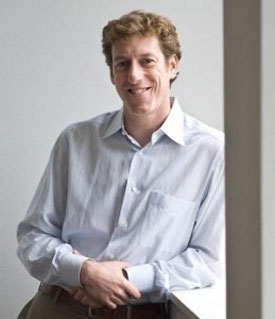
Michael Burger is a Lecturer and the Executive Director of the Sabin Center for Climate Change Law at Columbia University. (Photo: Columbia University)
CURWOOD: Now, the other cities and states have attempted to sue fossil fuel industries on the basis of being negatively impacted by climate change, and some jurisdictions out on the west coast, even New York City itself. To what extent does this particular lawsuit hold Exxon responsible for playing a role in climate change, not just not telling investors what's going on, but actually being related to the cause of climate disruption?
BURGER: This lawsuit is not really about liability for climate damages. It's fundamentally different than the nuisance suits and the tort lawsuits that have been brought by cities around the country against fossil fuel companies. This is really a corporate fraud case. It's about a company saying to investors that it was doing one thing when, in fact, it was doing another. Underlying it is this issue of stranded assets, and whether Exxon was being forthright in acknowledging the risk that dealing with climate change poses to its business. But it's not looking back at what Exxon has done, and seeking compensation for the damages that have resulted from climate change.
CURWOOD: As I understand it, there's another lawsuit against ExxonMobil that began back in August. It's in Texas, that alleges similar transgressions. So, tell me a little bit more about this case, I believe it's called Ramirez v. ExxonMobil.
BURGER: Very similar or even identical facts. But the New York Attorney General had access to millions of documents, from what I've heard, before filing this summons. The shareholder lawsuit, which was filed earlier, the plaintiffs didn't have access to all of these documents. So, there's a much more robust factual basis in the complaint and in the New York Attorney General's case than in the shareholder suit. But they're both talking about the proxy cost and the alleged fact that Exxon told investors that it was using one proxy cost for carbon and in fact, was using another.
CURWOOD: I understand that in the Texas case that you talked about with the shareholders that, in fact, the trial judge, or the would-be trial judge, has allowed it to move forward towards discovery, didn't immediately dismiss it outright.
BURGER: That's exactly right. That case, the plaintiffs in that case survived the motion to dismiss. Exxon has asked the trial judge to reconsider that decision. Generally, those motions for reconsideration fail because you're basically asking the same judge to go back and make a different decision than the one that they just made. So, that case is moving forward.
CURWOOD: So far, what's Exxon been saying about these lawsuits?
BURGER: Well, Exxon's main communications strategy appears to be to sort of cloud the alleged facts by arguing that the attorney general's investigation in the first place and now this lawsuit are the product of a conspiracy between government officials, some foundations and environmental activists, and that this is all a political campaign. So, they're seeking to sort of make this out as if it's an attack on Exxon.
CURWOOD: Over the years, ExxonMobil has acquired a reputation of being difficult to deal with in court. Famously perhaps after the Exxon Valdez spill in Alaska, it was many, many, many, many years before the damages that were awarded there even started to be paid out Exxon. I imagine that Exxon’s response to this case is a similar sort of tough line.
BURGER: Well, Exxon has a reputation for being aggressive in court as well as outside of court, and I expect that the next step in this case will be a motion to dismiss, and that if that motion to dismiss fails that we’ll be watching this case for a long time. So, hold tight.
CURWOOD: So, Michael how much of an existential threat to Exxon are these lawsuits?
BURGER: I don't think these cases pose an existential threat to Exxon, but society reckoning fully with climate change might.
CURWOOD: Michael Burger is the executive director of the Sabin Center for Climate Change Law at Columbia University. Thanks for taking the time with us today.
BURGER: Thank you, Steve. A real pleasure.
CURWOOD: A spokesman for Exxon said in an email -- quote -- “the allegations by the New York Attorney General’s office are baseless. Claims that we used two sets of books are false, and we look forward to refuting them as soon as possible and getting this case dismissed.” Exxon’s full statement is posted on our website, loe.org.
Exxon Mobil Statement on the New York Attorney General's case
"The allegations by the New York Attorney General’s office are baseless. Claims that we used two sets of books are false and we look forward to refuting them as soon as possible and getting this case dismissed.
"These allegations are a product of closed-door lobbying by special interests, political opportunism and the attorney general’s inability to admit that a three-year investigation has uncovered no wrongdoing.
"There is no evidence to support these allegations, which come after a 2016 press conference by former New York Attorney General Eric Schneiderman, Al Gore and other Democrat attorneys general, a discredited media campaign and lobbying by anti-fossil fuel activists."
Related links:
- New York AG Office Filing [Full]
- More on the Texas Climate Litigation
- New York Times | “New York Sues Exxon Mobil, Saying It Deceived Shareholders on Climate Change”
- Michael Burger of Columbia Law School
[MUSIC: Sharon Shannon, “Sacred Earth” on Sacred Earth, Celtic Collections]
Investigative Reporting In Coal Country
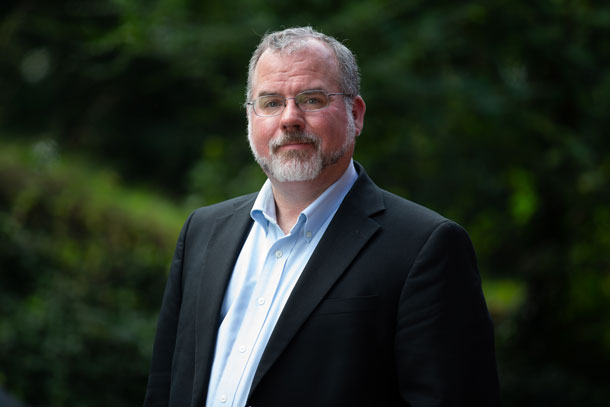
Charleston Gazette-Mail reporter and 2018 MacArthur Fellow Ken Ward. (Photo: John D. & Catherine T. MacArthur Foundation)
CURWOOD: The MacArthur Foundation selects 20 to 30 “people of outstanding talent” each year, as Fellows. These promising individuals receive a no-strings-attached stipend of $625,000 that’s meant to enable them to pursue bold new creative work, or advance their expertise. One of the 2018 MacArthur Fellows is a familiar name in environmental reporting circles. He’s Ken Ward, an investigative journalist based in West Virginia. Ken is best known for covering corruption within the coal industry and its effects on workers. He’s been with the Charleston Gazette-Mail since 1991. Congratulations, Ken!
WARD: Thank you very much.
CURWOOD: Ken, now you've been reporting on the coal industry since 1991. So, the math will tell us that's 27 years. What sparked this passion for covering these types of stories?
WARD: Well, I got started covering the coal industry when I interned here, what was then known as the Gazette, in the summer of 1989. And that summer, the United Mine Workers Union was on strike against a company called Pittston Coal. So, I spent most of that summer riding around southern West Virginia with a photographer and talking to coal miners on picket lines. And it was just fascinating and really got my interest in that industry going, and here I am today.
CURWOOD: Talk to me about some of the biggest stories you've covered within the coal industry.
WARD: The thing that I spent a lot of time on since April of 2010 was the Upper Big Branch mine disaster and explosion in Raleigh County, West Virginia, that killed 29 miners. And we spent a lot of time investigating that and writing stories about it. And then covering the trial of Don Blankenship, the CEO of the company, who spent a year in jail after he was convicted of conspiring to violate federal mine safety standards.
CURWOOD: The Trump administration has moved to reduce regulations on coal. How has that actually affected the state economically and public health wise?
WARD: You know, one of the things that the Trump administration did early on, there's been a series of a couple of dozen papers by Michael Hendricks, a scientist who was at WVU and some colleagues of his and others that talk about mountaintop removal and how people who live near mountaintop removal mining are suffering greater risks of birth defects and cancer and premature death than people who don't live right near these mountaintop removal mines. And the Obama administration had commissioned a National Academy of Sciences review of all that science that would help inform the Interior Department in perhaps passing additional regulations to help with those health problems. And one of the first things that Trump administration did was put a stop to that study, they withdrew the money, so that the Interior Department said to the National Academy, we don't, we're not going to pay for this. We don't want you doing this study. So, that isn't even really stopping regulations. That's just stopping the advancement of knowledge about how this activity affects people. So, that's one of the more significant things that I think has been done by this administration to kind of quelch the public really finding out what's going on.
CURWOOD: Talk to me about climate change and how you've depicted that in your stories, and how the West Virginia community has responded to that.
WARD: Well, climate change is an awful tough issue in a place like West Virginia. You know, people here don't really want to think that, wow, we're gonna have to just really redo our whole economy. And in one of the things I've tried to do with my coverage of these issues, is not be drawn into kind of false debates about the science of climate change, and instead, kind of make sure that we ground our readers in the fact that regulations on climate change aren't what has damaged the coal industry in these recent years. That's not what's happened. And really, I think that, you know, everybody, everybody in life needs a best friend. Because sometimes when you kind of go around the bend on something, you need somebody who's going to kind of pull you back and say, hey, why don't wait a second, what are you doing, kind of grab you by the shirt, and shake you and bring you back to reality. And I think that for a small newspaper like ours, sometimes our job is to try to be our community's best friend, and to tell them something they really don't want to hear, which is that climate change is real, and we’ve got to do something about it.

Ken Ward has been a journalist committed to unveiling corruption within the coal industry with the Charleston Gazette-Mail since 1991. (Photo: John D. & Catherine T. MacArthur Foundation)
CURWOOD: Moving forward, Ken, now that you've been awarded the MacArthur Fellowship, what projects do you intend to pursue? What do you hope to accomplish? And by the way, how did it feel to find out you've been chosen for such a prestigious award?
WARD: I was pretty freaked out. I was just shocked. I had no idea that I was even being looked at for something like this. And later that night, three in the morning, I woke up and it was one of these things where I thought, well, wait, that that couldn't really have happened. And I had to kind of roll over and get my phone off the nightstand and look and see well, yep, I did get an email from them. I guess I wasn't imagining all that. In the near term, what I want to do is, I've got until the end of this year on my project on the natural gas industry with ProPublica and we've got, I fear, more stories than we have time. So, I really want to get cracking on those and get them done. And what I hope to do is to stay here working at the newspaper and doing these kinds of stories.
CURWOOD: Ken, you've been given this amazing prestigious award, the MacArthur Fellowship, but what are you most proud of?
WARD: Well, two things. You know, one, we spent a long time here, many, many years covering Massey Energy and Don Blankenship and the kind of safety practices that miners were forced to live with under those companies and under Blankenship’s leadership. And after his criminal case and his trial and he was appealing his conviction, I went to Richmond to hear the oral argument from the Fourth Circuit Court of Appeals and walked into the courtroom. And there were a couple of ladies, they were family members of miners who died at UBB. And one of them kind of glanced over her shoulder and saw that I'd come into the room and said, "Oh, well, there's Ken. We knew Ken would be here. The Gazette’s always been here for us." And to me, that's just a really powerful sort of statement about what journalism is all about that these ladies, these widows of miners who got blown up in a coal mine were counting on us, and two, you know, if you look at all of the folks who've been honored with these MacArthur Fellows, I mean, they're just really giants. And for me, you know, one of the coolest things was my son Thomas is 13, and is a big "Hamilton" fan. He's got the whole thing memorized. And he often isn’t very interested in what I'm doing at work. But when he saw that I'd gotten this award that Lin-Manuel Miranda had gotten, he thought it was a big deal. And that made me pretty proud.
CURWOOD: West Virginia investigative reporter Ken Ward was recently awarded a fellowship from the MacArthur Foundation. Ken, again congratulations, and thanks for taking the time with us today.
WARD: Thank you.
Related links:
- Ken’s Coal reporting, archived on his blog
- Ken Ward’s MacArthur Fellow Page
- Ken’s ProPublica Page
Birdnote®: Two Phoebes Share The American West

A Black Phoebe. (Photo: © Mick Thompson)
[BIRDNOTE THEME]
CURWOOD: In the arid American West, water resources tend to determine where animals and plants can thrive. And while many species need lots of water, others are fine even in the driest desert. BirdNote®’s Michael Stein tells a tale of two phoebes.
STEIN: In the American West, there are two species of phoebe that share the same expansive country. They’re both flycatchers, but they rarely compete for food because they’ve evolved to occupy different habitats.
[Say’s Phoebe song, http://macaulaylibrary.org/audio/191105, 0.12-16]
The Say’s Phoebe’s voice echoes off the rocks of almost any dry canyon west of the Rockies.
[Say’s Phoebe song, http://macaulaylibrary.org/audio/191105, 0.12-16]
A small brown flycatcher with an orange belly, the Say’s Phoebe is named for Thomas Say, an early 19th Century explorer and naturalist. It prefers dry, open habitats ranging from tundra to desert — usually well away from trees or water. It’s just as happy nesting among stone carvings in an Aztec ruin in central Mexico as it is on a cliff face north of the Arctic Circle. No other North American flycatcher ranges nearly so far north.

A Say’s Phoebe perched on barbed wire. (Photo: © Mike Hamilton)
[Say’s Phoebe song, http://macaulaylibrary.org/audio/191105, 0.12-16]
[Black Phoebe song,http://macaulaylibrary.org/audio/126464, 0.08-.11]
The Black Phoebe is a close cousin to the Say’s. But it’s nearly always hunting by a body of water. You’ll find it alongside creeks, reservoirs, or even the tiniest pond in a backyard or garden.
Their voices set them apart, too. The brisk phrases of the Black Phoebe’s song
[Black Phoebe song, http://macaulaylibrary.org/audio/126464, 0.08-.11]
…standing in a sharp contrast to the plaintive refrain of the Say’s Phoebe, with which it shares the American West.
I’m Michael Stein.
[Say’s Phoebe song, http://macaulaylibrary.org/audio/191105, 0.12-16]
Written by Bob Sundstrom
Bird sounds provided by The Macaulay Library of Natural Sounds at the Cornell Lab of Ornithology, Ithaca, New York. Say’s Phoebe [191105] recorded by W L Hershberger; Black Phoebe [126464] recorded by Thomas G Sander
BirdNote's theme music was composed and played by Nancy Rumbel and John Kessler.
Producer: John Kessler
Executive Producer: Dominic Black
© 2018 Tune In to Nature.org October 2018 Narrator: Michael Stein
https://www.birdnote.org/show/two-phoebes-share-west
CURWOOD: For photos, flit on over to our website, LOE.org.
Related links:
- This story on the BirdNote® Website
- Learn more about the Black Phoebe
- More about the Say’s Phoebe
[MUSIC: Mamadou Diabate, “Soutoukou” on Tunga, traditional Gambian/arr.Mamadou Diabate, Alula Records]
CURWOOD: Next time on Living on Earth, Interior Secretary Ryan Zinke is moving ahead with leases for offshore wind, starting off Massachusetts and California.
ROMM: So, I certainly won’t appraise Zinke for the positive efforts towards offshore wind. It's really a drop in the ocean compared to the disastrous policies in the Trump administration.
CURWOOD: Offshore wind power next time on Living on Earth.
[MUSIC: Mamadou Diabate, “Soutoukou” on Tunga, traditional Gambian/arr.Mamadou Diabate, Alula Records]
CURWOOD: Living on Earth is produced by the World Media Foundation.
Our crew includes Naomi Arenberg, Bobby Bascomb, Thurston Briscoe, Savannah Christiansen, Jenni Doering, Jaime Kaiser, Don Lyman, Lizz Malloy, Aynsley O’Neill, Jake Rego, Sarah Rappaport, Adelaide Chen, and Jolanda Omari. Tom Tiger engineered our show. Alison Lirish Dean composed our themes. You can hear us anytime at LOE.org, iTunes and Google Play- and like us, please, on our Facebook page - PRI’s Living on Earth. And we tweet from @livingonearth. I’m Steve Curwood, Thanks for listening!
ANNOUNCER: Funding for Living on Earth comes from you, our listeners and from the University of Massachusetts, Boston in association with its School for the Environment, developing the next generation of environmental leaders. And from the Grantham Foundation for the Protection of the Environment, supporting strategic communications and collaboration in solving the world’s most pressing environmental problems. Support also comes from the Energy Foundation, serving the public interest by helping to build a strong clean energy economy.
ANNOUNCER 2: PRI, Public Radio International.
Living on Earth wants to hear from you!
Living on Earth
62 Calef Highway, Suite 212
Lee, NH 03861
Telephone: 617-287-4121
E-mail: comments@loe.org
Newsletter [Click here]
Donate to Living on Earth!
Living on Earth is an independent media program and relies entirely on contributions from listeners and institutions supporting public service. Please donate now to preserve an independent environmental voice.
NewsletterLiving on Earth offers a weekly delivery of the show's rundown to your mailbox. Sign up for our newsletter today!
 Sailors For The Sea: Be the change you want to sea.
Sailors For The Sea: Be the change you want to sea.
 The Grantham Foundation for the Protection of the Environment: Committed to protecting and improving the health of the global environment.
The Grantham Foundation for the Protection of the Environment: Committed to protecting and improving the health of the global environment.
 Contribute to Living on Earth and receive, as our gift to you, an archival print of one of Mark Seth Lender's extraordinary wildlife photographs. Follow the link to see Mark's current collection of photographs.
Contribute to Living on Earth and receive, as our gift to you, an archival print of one of Mark Seth Lender's extraordinary wildlife photographs. Follow the link to see Mark's current collection of photographs.
 Buy a signed copy of Mark Seth Lender's book Smeagull the Seagull & support Living on Earth
Buy a signed copy of Mark Seth Lender's book Smeagull the Seagull & support Living on Earth

